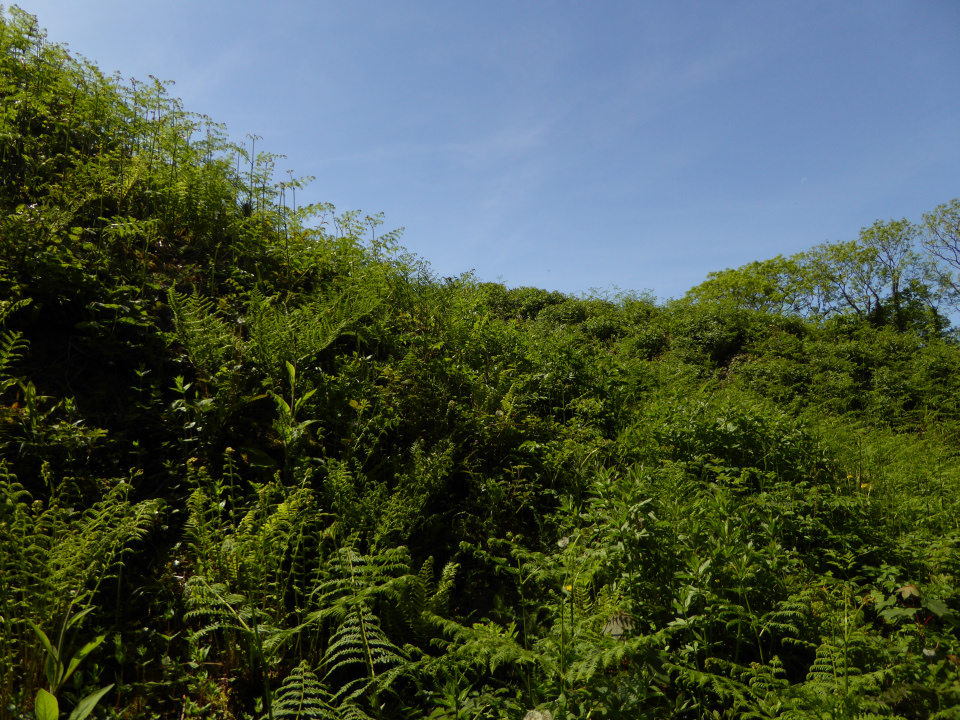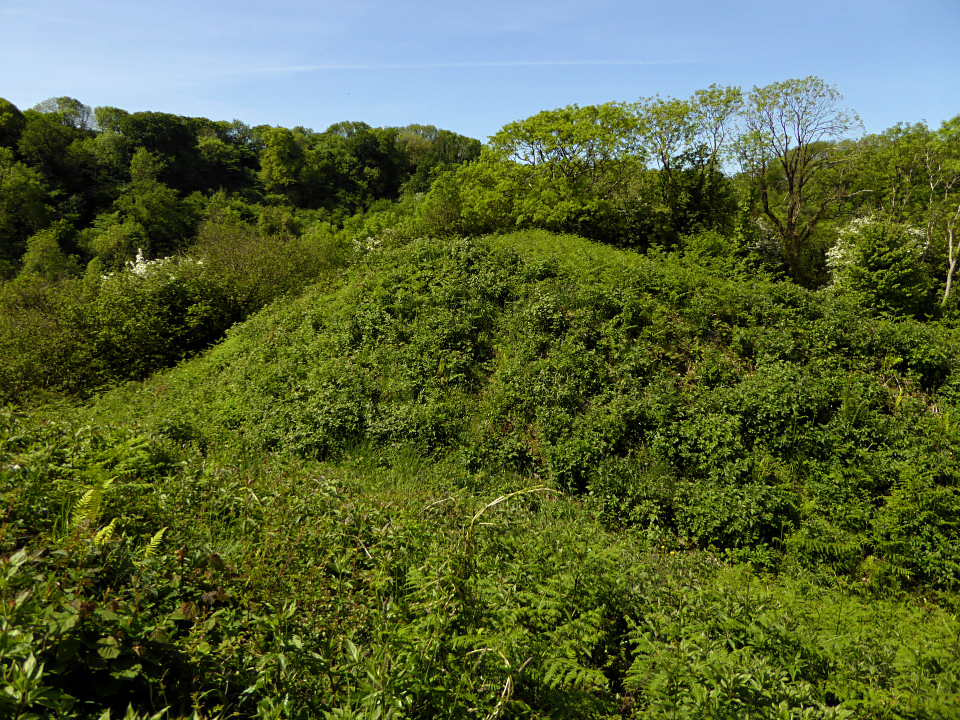
Immediately below the fort is Bishopston stream, running along a winding valley before joining the sea at Pwll Du. Getting fresh water would certainly not have been an issue.

Immediately below the fort is Bishopston stream, running along a winding valley before joining the sea at Pwll Du. Getting fresh water would certainly not have been an issue.

The footpath leading up to the fort from the northeast. The fort is just beyond the edge of the trees.

Outer rampart left and inner rampart right.

The interior of the fort.

Looking southeast down the valley towards the sea.

Impressive ramparts loom higher than my head from down at their base.

Under all the vegetation, this has probably the best preserved ramparts of any of the south Gower promontory forts.

Looking down on the inner bank and ditch from the outer.

The southern flank of the fort, dropping steeply down to Bishopston Valley.

The promontory fort overlooks the Bishopston Valley, which is now thickly wooded. A little to the east at Hanging Cliff the foliage opens out the give an aerial view of the valley. The fort is down and to the right but obscured by the trees.
Visited 11.10.13
Directions:
See directions for Caswell Cliff Fort.
When you reach Pwlldu Bay there are two footpaths leading north off the main coastal path. I took the more western path which goes behind a house, across a field and into the woods. The fort is on the eastern side of the woods.
When I use the word ‘path’ what I really mean is a path on the map but nothing on the ground! When you enter the very overgrown woods you are met with a steep sided ravine in which making any headway is difficult. There are lots of moss covered boulders about and trees and roots angled in all directions. It reminded me a bit of the jungle in Jungle Book. Alas there was no sign of any singing/dancing monkeys. Certainly the archaeological remains amongst these trees are not as good!
In all honest I couldn’t make out anything of this promontory fort – but there again I can’t say with 100% certainty that I was looking in the right place to start with.
Perhaps it would be easier to approach the site via the more eastern of the two paths although this would involve walking through the woods the whole of the way.
Excavation finds, from a 1939 excavation by Audrey Williams, included two slingstones, bones of red deer, ox, pig and sheep or goat, together with various shells of molluscs. A Roman brooch and iron finger ring, and a fragment of plain Samian pottery indicate IA occupation continuing into the Roman period. A single hut circle was found just inside the inner rampart.
Info taken from “Prehistoric Sites of Gower and West Glamorgan” (Wendy Hughes, 1999 Logaston Press).
Coflein (J. Wiles 2002) description:
An enclosure, c.48m by 36m, formed by two lines of ramparts and ditches cutting off an inland promontory, the outer ditch utilising a natural fault. Entrance to the enclosure appears to have been from below the N side of the promontory, by-passing the ramparts.
Aerial photo here.





















































